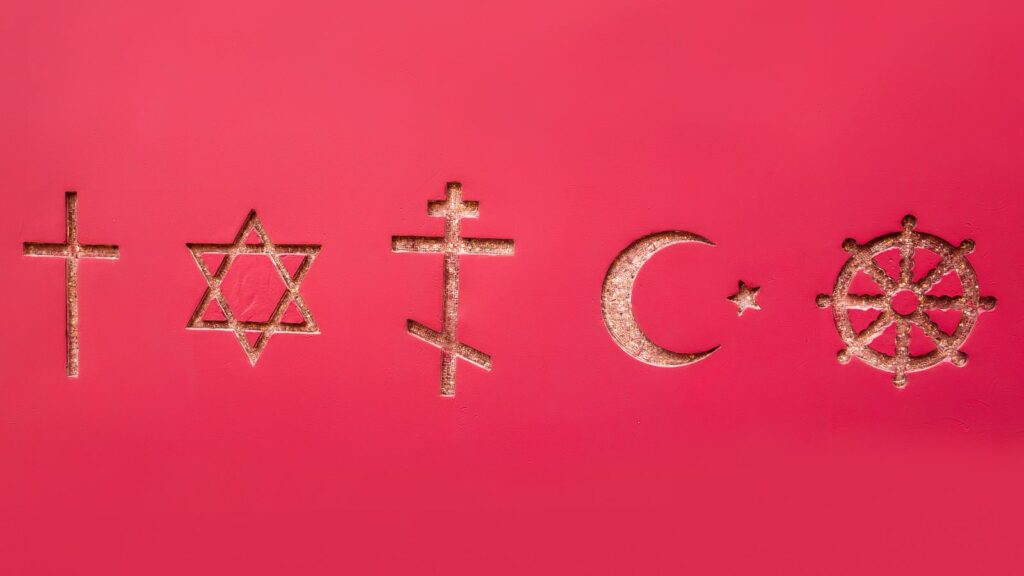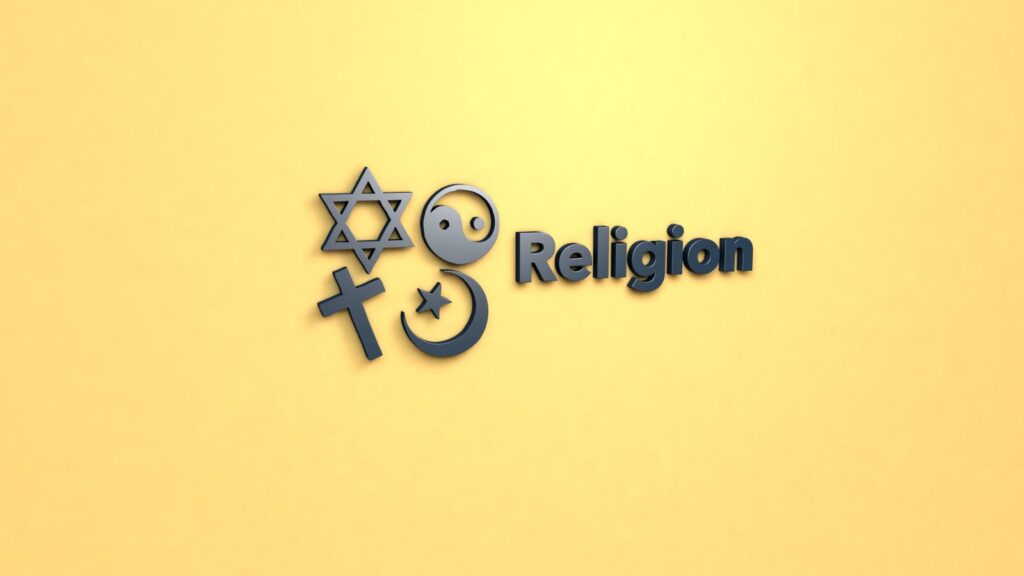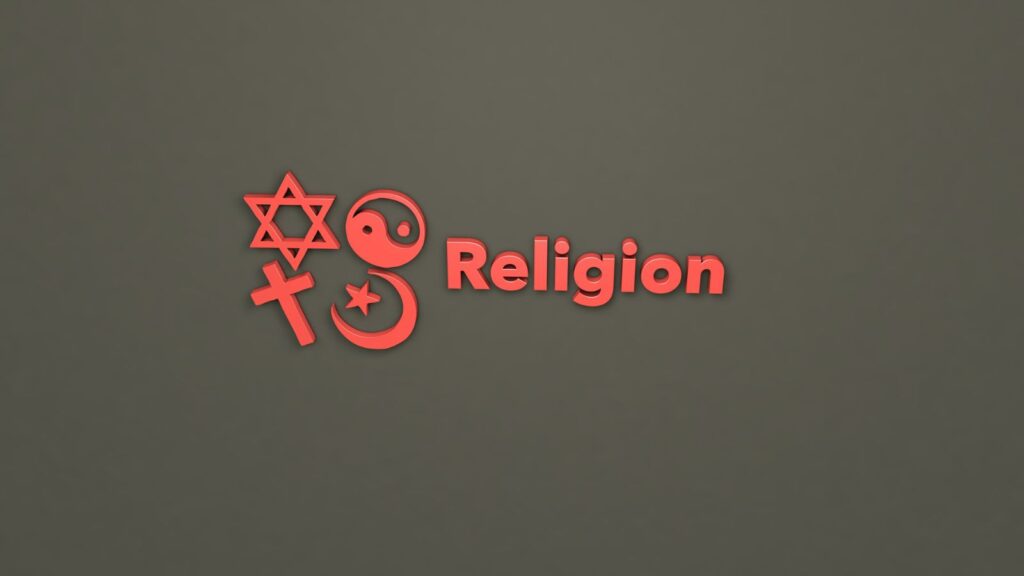Exploring the Longest-Lived Religions agama yang memiliki usia terpanjang dan merupakan agama pertama dikenal manusia adalah

When it comes to the world’s oldest religions, there’s a lot to unpack. These spiritual systems have shaped societies, cultures, and individuals for millennia. They’ve withstood the test of time, evolving and adapting to the changing world.

One might wonder, which religion holds the title for the longest lifespan? Which faith can be traced back the furthest in human history? The answers to these questions aren’t straightforward, but they’re certainly intriguing. Unraveling the threads of ancient beliefs offers a fascinating glimpse into the past.
In this article, we’ll dive into the history of the oldest religions, exploring their origins, beliefs, and influence on the world. We’ll try to shed light on the religion that’s been around the longest, and the one that came first. Buckle up, it’s going to be a journey through time and spirituality agama yang memiliki usia terpanjang dan merupakan agama pertama dikenal manusia adalah.
agama yang memiliki usia terpanjang dan merupakan agama pertama dikenal manusia adalah
Contents
As we venture back in time, we find ourselves in ancient Hinduism, often considered the world’s oldest living religion. Its roots go back some 4000 years in the culturally rich subcontinent of India. Hinduism isn’t just the oldest; it continues to thrive to this very day with millions of practitioners worldwide.

Hinduism embraces a diverse set of beliefs. However, at its core, it’s a complex, ritualistic system. The central tenets revolve around Karma (the law of cause and effect), dharma (ethical duty) and the cycle of life, death, and rebirth. Its influence over the ages has left a formidable mark, with its philosophies shaping many aspects of global culture and thought.
Since ancient times, Hinduism and its spiritual practices have permeated various aspects of life in South Asia. From rituals, customs, to philosophies, it continues to shape the fabric of societies in the region. It’s not just a religious practice, but a way of life that transcends the boundaries of the spiritual and the secular.

Next in line, emerging from the fertile crescent of the Middle East, we encounter Zoroastrianism. Founded in the 6th century BCE, it’s one of the world’s oldest monotheistic religions. The teachings of Zoroaster (Zarathustra) form the bedrock of this faith. Although today, it has relatively few followers, it has had considerable influence, especially on the three Abrahamic religions: Christianity, Islam, and Judaism.
Circling back to the Eastern philosophies, we have Buddhism. Born out of spiritual rebellion against the rigid rituals of Hinduism over 2500 years ago, Buddha’s teachings resonate till today. Buddhism is widely practiced in various parts of the world, attesting to its enduring appeal agama yang memiliki usia terpanjang dan merupakan agama pertama dikenal manusia adalah.
Each one of these ancient faiths offers a window into the past, revealing a fascinating panorama of human spirituality and the quest for understanding the divine. Indeed, the journey through time and spirituality continues as we delve deeper into these rich tapestries of beliefs and practices.
Historical Background of the Oldest Religion
Peeling back the layers of time, we venture into an in-depth exploration of the historical backdrop of the world’s most ancient religions. The beauty of such grand antiquity is that it’s not restrained to mere dates and discrete events, but instead presents a challenging journey, featuring numerous turns, detours, and fascinating cultural influences along the way.

Origins and Evolution of the Religion
Hinduism, recognized as the world’s oldest living religion, has its roots deeply set into the rich soils of the Indian Subcontinent, estimated to be more than 4000 years old. As opposed to a definitive foundation, Hinduism woven itself from intertwined threads of a multitude of beliefs, rituals, and philosophical reflections. Beliefs in karma (actions and their consequences), dharma (ethical duties), moksha (the liberation from the cycle of life and death) are at the heart of this dynamic, complex religion. Hindu scriptures like the Vedas and the Upanishads underscore the religion’s dedication to knowledge, contemplation, and spiritual growth.
Shifting the lens to ancient Persia, we discover Zoroastrianism, perhaps the world’s first monotheistic faith. Predating Christianity and Islam, it introduced convoluted doctrines like the dichotomy of good and evil, the afterlife, and the final judgement to human spirituality. This Iran-born creed is central to the development of key theological concepts that molded the religious topography of the Middle East, and in a broader sense, the world.

Spread and Influence across Civilizations
Inextricably bound to societal frameworks, religions influence civilizations and vice versa. Notably, Hinduism heavily impacted the memory of mankind by diffusing classical wisdoms through epics like the Mahabharata and Ramayana. Its impact also translated into art forms, social structures, and political systems, trickling down throughout Southeast Asia
Comparably, the influence of Buddhism trekked from India to Nepal, Sri Lanka, and China, later moving as far as Japan, Korea and the Pacific archipelagos. The footprints of this peaceful faith are inked in the sands of time with grand Buddha statues, tranquil monasteries, and The Four Noble Truths agama yang memiliki usia terpanjang dan merupakan agama pertama dikenal manusia adalah.
Sacred Texts and Beliefs of the Ancient Faith
In the ever unfolding tapestry of human history, religions have played a crucial role. As we delve further into the study of these early faiths, their rich and complex ideologies reveal a profound wisdom that has sculpted humanity’s spiritual landscape.

Core Tenets and Philosophies
When examining the ancient religions, each one stands on its unique principles and doctrines. Hinduism roots its ideology in the triad of karma (the law of cause and effect), dharma (duty or righteousness) and moksha (liberation from the cycle of birth and death). It firmly holds the belief in an ultimately divine reality, Brahman, which can be experienced in countless forms, each facet serving as a deity with a distinctive set of myths and attributes.
Buddhism, on the other hand, while sharing its roots with Hinduism, swiftly departs from the latter’s theistic teachings. It centers around the teachings of Siddhartha Gautama (also known as the Buddha), outlining a unique perspective on suffering, its causes, and its cessation. Central to the Buddhist ethos are the Four Noble Truths and the Eightfold Path which guide an adherent towards Enlightenment.
Rituals and Practices Embedded in Tradition

Interwoven in these ancient faiths are elaborate rituals and practices that have survived millennia. The daily worship or Puja in Hinduism involves intricate offerings of food, flowers, and incense to deities, accompanied by ritualistic chanting. Similarly, Buddhism encourages daily mediation and mindfulness as a path to greater self-awareness and nirvana.
As we trace the lineage of Zoroastrianism, we encounter intriguing rituals like the Yasna, where sacred liquor, Haoma, is consecrated. This rite is performed by trained priests and uses a collection of texts from the Avesta, the primary collection of Zoroastrian scriptures.
Perseverance Through Centuries: Survival and Resilience
Furthermore, these ancient religions haven’t just shaped history and civilization as we know it—they’ve also displayed an extraordinary resilience over centuries. Major religious shifts, societal upheavals, invasions, and cultural changes have swept across regions where they were once the major faiths. But despite all, they’ve survived and indeed thrived, continuing to command millions of followers.

Consider Hinduism, for instance. Originated in the Indian subcontinent, it’s one of the world’s most enduring faiths. Much of its resilience lies in its adaptability and the vast diversity under its umbrella. It’s offered spiritual guidance and morality codes through various epics like Mahabharata and Ramayana, classrooms of history where moral dilemmas are debated. Let’s not forget the Bhagavad Gita, another monumental text.
Dwell upon Buddhism next. Founded by Buddha himself, it diverged from the predominant Hindu beliefs of the time, launching a revolution in thought. It was enthusiastically adopted across many Asian lands, from the congested city lanes of India to the peaceful monasteries of Japan. The path of enlightenment, the notion of no-self, the impermanence of everything—these teachings continue to captivate and liberate countless hearts today agama yang memiliki usia terpanjang dan merupakan agama pertama dikenal manusia adalah.
The tryst of Zoroastrianism with survival is quite phenomenal. Once a major world religion, it faced decimation during Islamic conquests. But it persisted quietly, holding onto its tenets and rituals—like the Yasna ritual and the veneration of elements—especially fire.
Modern Relevance and Challenges Faced Today

Ancient religions have not just survived, they’ve wielded significant influence on the modern world. Hinduism has inspired global conversations on spirituality, with central concepts such as karma, yoga, and meditation becoming popular. Unlike some other traditions, Hinduism’s diverse rituals and philosophies speak to a range of spiritual needs. They’ve made sizeable contributions to art, music, literature, and philosophy, shaping contemporary culture in surprising ways.
Ancient religions like Hinduism, Buddhism, and Zoroastrianism have proven their resilience over time. They’ve weathered historical shifts and cultural changes, shaping history and society along the way. Today, they continue to influence global spirituality, mental health approaches, and environmental concerns. Yet, they’re not immune to challenges agama yang memiliki usia terpanjang dan merupakan agama pertama dikenal manusia adalah.

Founded by Sophia Rodriguez, IGXO Cosmetics is a PETA-certified, cruelty-free, and vegan makeup brand.





